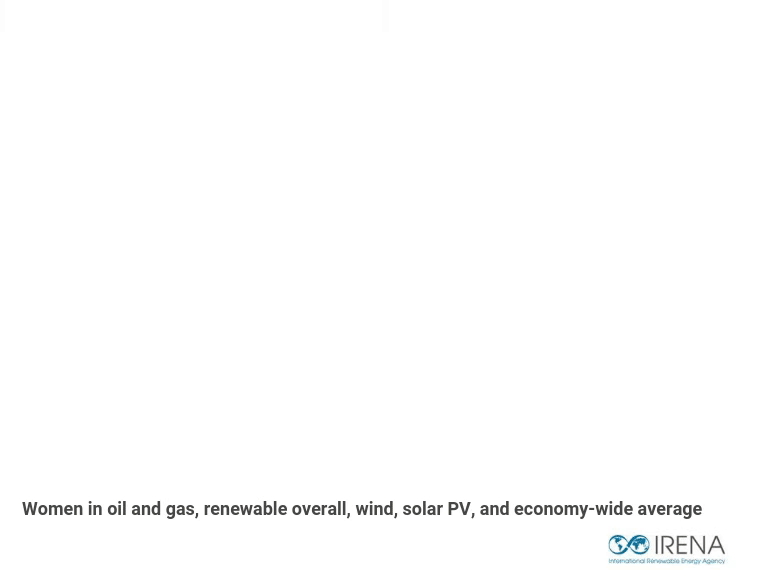The representation of women in the energy industry, encompassing both the traditional oil and gas sector and the emerging renewable energy sector, is a topic of increasing significance. This article examines the current status of women’s participation in these industries, their primary roles and locations, and their challenges. Additionally, it explores the influence of technology, education, emerging energy trends and leadership on women’s involvement.


The oil and gas industry has made progress in diversity and inclusion efforts. However, the percentage of women working in this sector has remained stagnant at 22 percent since 2017, showing just the slightest increase of one percent, according to Untapped Reserves 3.0: Advancing Diversity, Equity, and Inclusion in the Energy Sector (Sept. 2023), the most recent report issued by BCG. The chart below shows the data for women in Europe, North America, Central and South America, the Middle East and Asia Pacific (BCG, 2021), with Europe leading the way in gender equity. Underrepresentation of women persists in entry-level positions, technical and operations roles, and expatriate positions (BCG, 2021). Women face unconscious biases related to gender challenges, and men hold the majority of decision-making senior and executive-level positions (BCG, 2021). The proportion of women in senior-level decision-making positions is significantly lower than in mid-level positions (BCG, 2021).


Within the solar PV industry, women comprise 47 percent of the workforce in manufacturing, 39 percent of service providers, and 37 percent of developers (IRENA, 2022). However, women’s representation drops to a mere 12 percent in solar PV installation (IRENA, 2022). Women are underrepresented in senior management posts, holding only 13 percent of such positions (IRENA, 2022). Nevertheless, women find opportunities in decentralized solar PV, engaging in non-technical positions such as marketing, sales, distribution, and product assembly and installation (IRENA, 2022).


Women’s representation in STEM fields, particularly engineering (22 percent), computer science (20 percent) and physics (21 percent), remains lower compared to other disciplines (National et al., cited in TechTarget, n.d.). Gender differences in high school students’ occupational plans significantly impact gender equality outcomes in STEM fields (Cornell University, cited in TechTarget, n.d.). Encouraging gender equality in STEM education is crucial for increasing women’s participation in technology-driven energy sectors.


Leadership and Career Advancement
Persistent unconscious biases hinder women’s career advancement in the energy industry. Men’s predominance in decision-making senior and executive-level positions may limit their understanding of the barriers women face (BCG, 2021). Bridging the gap between mid-level and senior-level roles, particularly in business and administration, is vital for equal opportunities for women (BCG, 2021).
Unlocking Potential
This article has highlighted the current status of women’s representation in the oil and gas and renewable energy industries. Despite progress in diversity and inclusion efforts, women’s participation remains below desired levels. Underrepresentation in various roles and locations and persistent unconscious biases underscore the need for continued commitment to achieving gender equality. By addressing these challenges and fostering supportive environments, the energy industry can unlock the full potential of women’s talents and contributions.
Citations:
– BCG (2021). Gender Diversity in the Oil & Gas Industry: Building a Foundation for Progress. https://www.bcg.com/publications/2021/gender-diversity-in-oil-gas-industry
– IRENA (2022). Solar PV Employs More Women Than Any Other Renewable. https://www.irena.org/News/pressreleases/2022/Sep/Solar-PV-Employs-More-Women-Than-Any-Renewables
– National Girls Collaborative Project (cited in TechTarget, n.d.). Women in Tech Statistics: The Latest Research and Trends. https://www.techtarget.com/whatis/feature/Women-in-tech-statistics-The-latest-research-and-trends
– Cornell University (cited in TechTarget, n.d.). Women in Tech Statistics: The Latest Research and Trends. https://www.techtarget.com/whatis/feature/Women-in-tech-statistics-The-latest-research-and-trends









